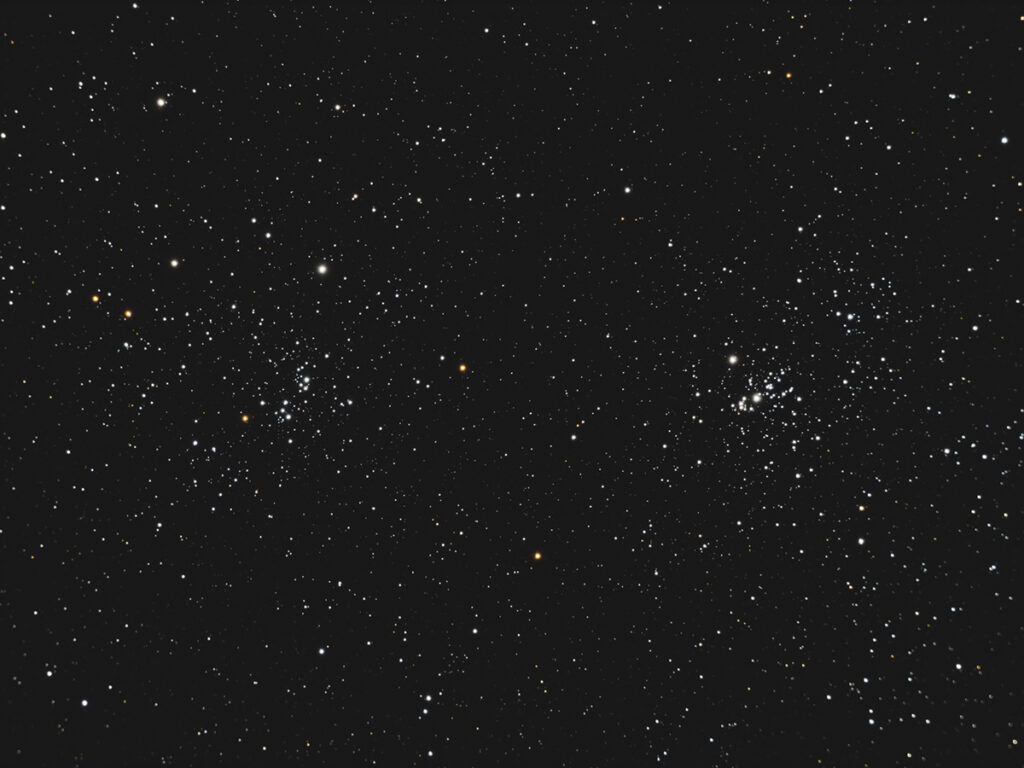
Telescope: Meade 10” LX850 ACF @ f/8, Orion Atlas EQ-G
Camera: QHY 367c Pro, GSO IR Blocking Filter
Guide scope: Astro-Tech 60mm, ASI120MM Mini, PHD2
Exposure: 76x60sec, gain 2800, offset 50, -10C, saved as Raw16/FITS
Darks: 32x180sec, gain 2800, offset 50, -10C, saved as Raw16/FITS
Flats: 64×0.250sec, tee shirt flats taken at dusk
Average Light Pollution: Red zone, Bortle 8, poor transparency, moonlight
Lensed Sky Quality Meter: 17.9
Stacking: Mean with a 1-sigma clip.
White Balance: Nebulosity Automatic
Software: SharpCap Pro, Deep Sky Stacker, Nebulosity, Photoshop
For a long time there was some debate as to whether the two clusters that make up the Double Cluster are actually associated with each other or just happened to appear in the same line of sight with one lying behind the other. It now appears that they are indeed lying next to each other, each about 7,000 light years away and about 100 light years apart. However, there is some evidence that the two clusters are of different ages, so while they may have formed separately from each other, they are now traveling companions.
The Double Cluster is currently rising in the northeast after sunset.
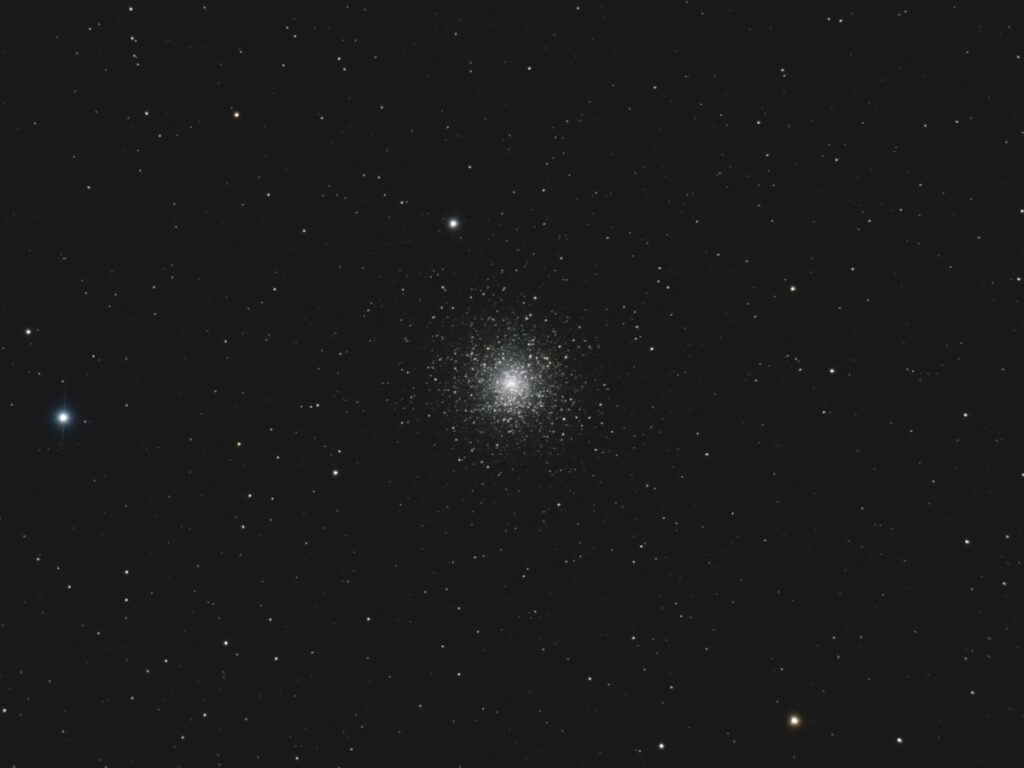
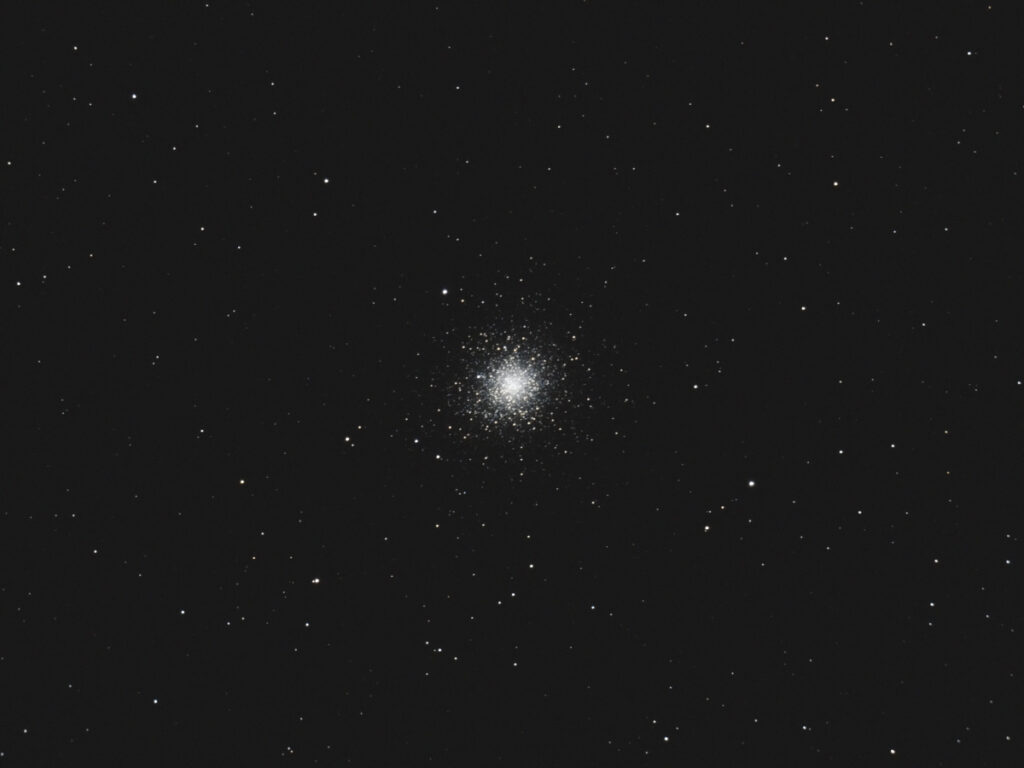
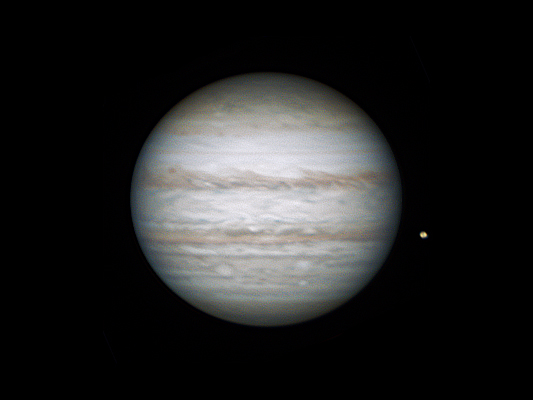
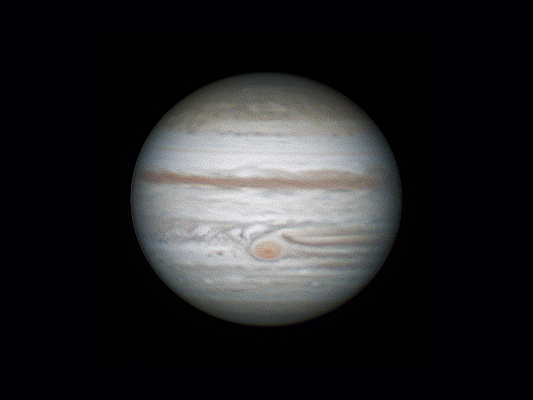
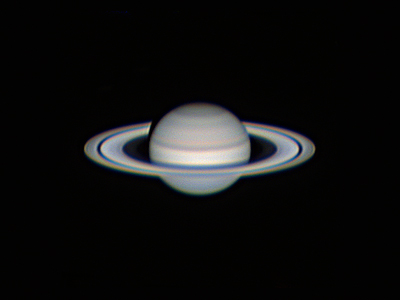
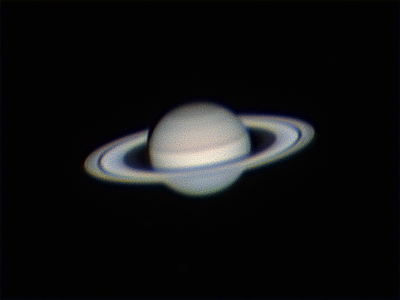
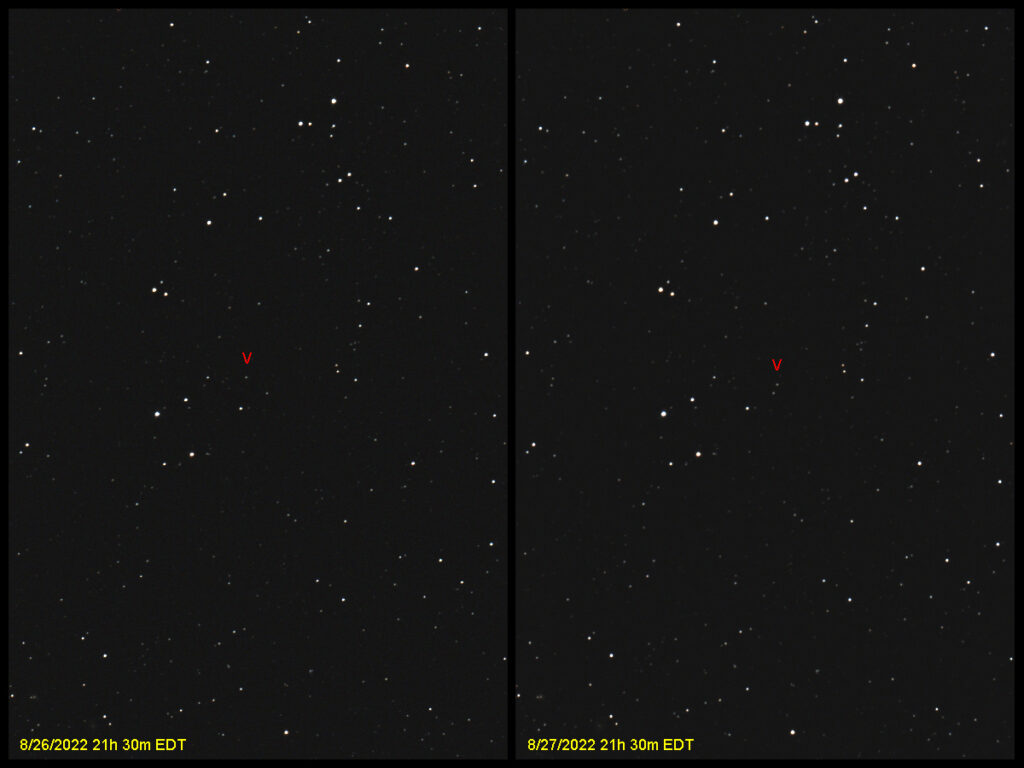
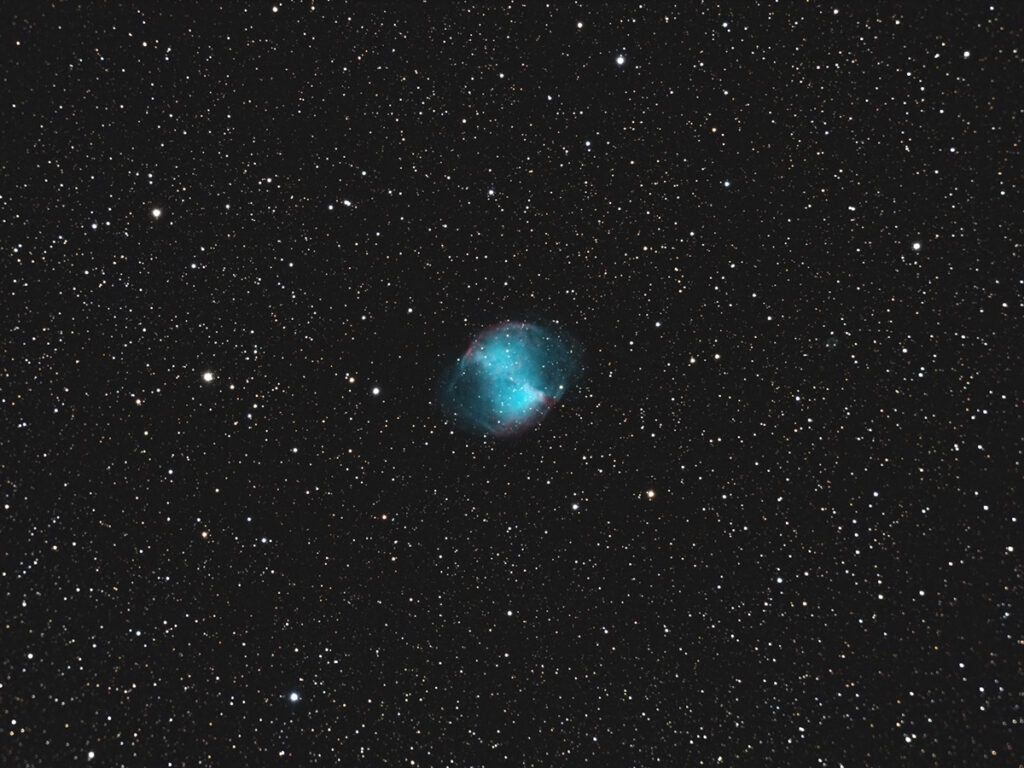
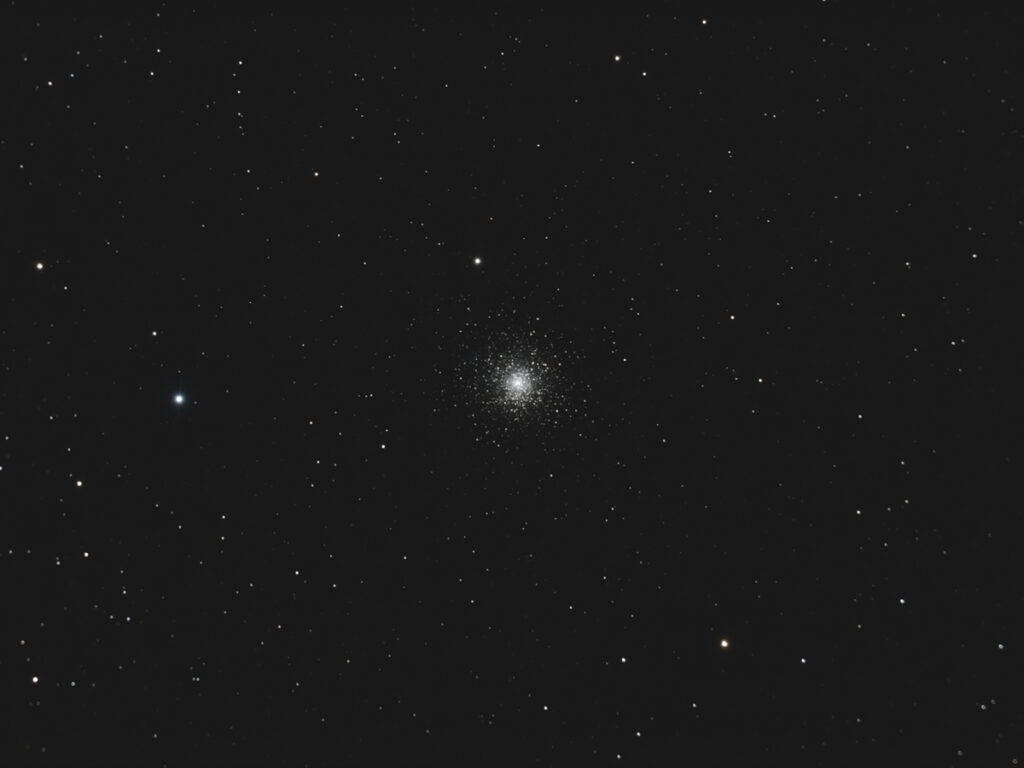
Recent Comments